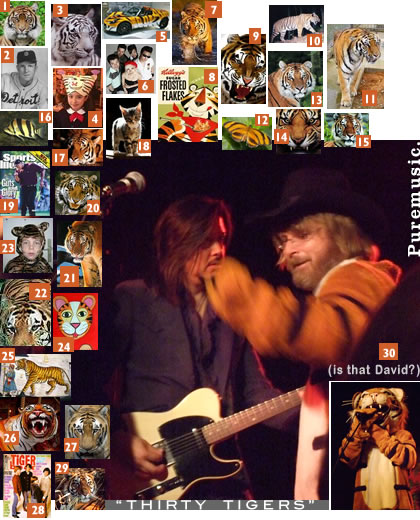
A Conversation with David Macias
Puremusic: Man, what a splendid change of pace. I'm always talking to one of your many artists. It's nice to talk to the Great Oz for a change.
David Macias: [laughs] The Great Oz, good Lord.
[laughter]
PM: So we come to, to paraphrase, pay some attention to that man behind the curtain.
DM: Yeah.
[laughter]
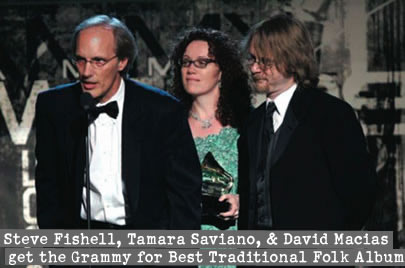
PM: After winning a Grammy for the Stephen Foster tribute, you've completed another ambitious and very admirable project with the just-released Song of America. Unbelievable.
DM: Well, yeah, thanks. I'll tell you, it is a little unbelievable to look back at the path that we've traversed in this album's birthing. And all who are involved are just really proud of it. We're getting some very nice comments about it from critics and bloggers, and it makes us feel like we've done something worthwhile.
PM: I'd love to hear it from you, for prospective buyers and listeners, how the idea was first conceived.
DM: Well, this album was not even a twinkle in my eye when it was conceived. All credit goes to Janet Reno and Ed Pettersen. Ed is a musician and a producer here in town. And on a family visit Ed was playing some folk songs. And Janet was talking to Ed and said that she felt like it would be a great gift to have an album that would cover the history of America, and that music is a great tool for helping young people learn.
So they kicked around that idea for a while and got pretty serious about it, and eventually wound up at my doorstep. They had heard the Stephen Foster record, actually, at a speech that she was giving for John Kerry in 2004. A friend of mine had put the music on before the she spoke. She and I are both native Floridians, and I think we probably--well, Stephen Foster wrote our state song, so maybe we have an elevated idea of Foster and his legacy. But she heard the Stephen Foster album and really loved it. And I got a call, asking if I'd like to have lunch with her and Ed the next day. And I said, "Well, of course."
So we went to have lunch. And embarrassingly, I actually got lost. It was at Cheekwood Mansion, and I couldn't remember exactly where the turn was. So we were 15 minutes late, which was not an auspicious beginning on my part. But we sat down to lunch and she articulated the idea behind what they wanted to do, and I gave my input as to how I felt like something like this could come to pass. And pretty soon we were rolling up our sleeves and compiling this album.
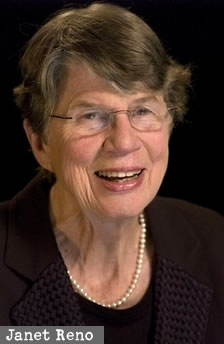
PM: Considering all the Seegers and Lomaxes and all the others in the folk tradition, for Janet Reno to have conceived the idea just from Ed in her presence singing some pointedly historical, perhaps, folk songs, was quite a brilliant idea on her part.
DM: Oh, I think so. Well, she's a brilliant woman. I've gotten to spend some time in her presence, and she really is an incredibly intelligent, kind, sensitive person. It's really been great just being able to get to know her, if only a little bit. But she definitely feels music. I think she and I are similar in that we feel music deeply, yet we have absolutely no talent for music. She's got some very vivid memories of music in her childhood. (Her aunt was actually the main music critic for the Miami Herald.) Janet is one of these people that just really feels music in a very deep way, so I think this project was a natural thought progression for her.
PM: Well, speaking of natural progressions, it's only right that I ask you now to tell us all that you are comfortable with about Ed Pettersen, who is obviously indispensable to every part of this project.

DM: Well, let me put it in this way: I feel like if you took any one of us out of the equation that the entire thing would not have happened. And Ed and I have been working together, I mean, talking all the time, throwing out ideas, arguing about them, each fighting for our points. And I think as a result of really working together on this, it came out better than it would have if either of us had tried to do it alone.
PM: Right. You're one of the producers of the compilation and one of the idea people and implementers and network geniuses involved in the whole project, but Ed was there in the trenches actually recording and producing most of those tracks. Is that right?
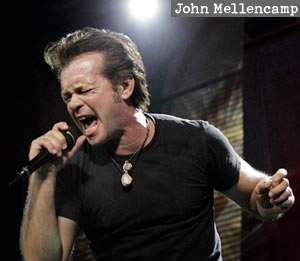
DM: And he shouldn't be sold short on the networking or talent end--I mean, he brought Mellencamp in. That was his deal.
PM: Wow, he is a connected fellow.
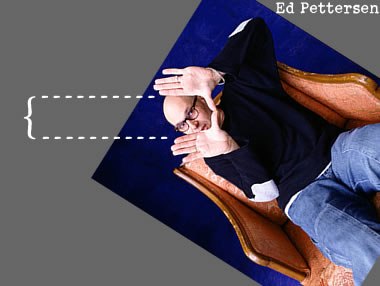
DM: Yeah. I think that may have come through some previous connection that John Mellencamp and Janet Reno had, or some positive interaction that they shared. But Ed was the one who followed it up and made that happen. So I mean, we each played our part in really helping land things. Certainly I reached out and got a lot of people on there. But some of my favorite tracks, like the Mellencamp, and the Martha Wainwright and the Janis Ian, were all things that Ed himself brought to the table. [Find out more about Ed at edpettersen.com.]
PM: What's Ed's tie to Martha?
DM: Well, Martha was among a very small group of artists that we had sort of singled out and thought that we had wanted to do that. And Ed, I don't think he'd had any tangible relationship with Martha, but he--
PM: He just made one.

DM: Yeah. He figured out how to make one. And I have certainly had to do the same thing myself with various people. We just tried to get the people that we wanted. So I definitely don't want people to perceive that somehow this was all my connections and his production. It was definitely a big stew, a big hash. We all joined in and just did whatever we could to make it happen. I also want to make sure that we note that there's a third producer on this record, too.
PM: Your point is well taken--it was the very next question, and somehow I was looking past it. How about Bob Olhsson, because he's another indispensable part of the puzzle.
DM: Without a doubt. Some of the tracks were just donated to us, or were done and sent to us. But many, many, of the tracks were done by Bob and Ed, here in Nashville. For instance, the Bettye LaVette track, that was recorded here in Nashville. And that's just a beautiful, soulful track.
PM: One of the standout tracks, for sure.
DM: Yeah. And that was Ed and Bob in the studio, really providing the production and guidance to bring that performance in.

Bob is an amazing engineer--not only in the recordings that were made, but in terms of sort of weaving this whole thing together as a whole, because it's very challenging to take all these different types of recordings and weave them into something cogent. Ed and I, we had a narrative thread that we had envisioned that ran through the whole thing, but in terms of looking at it and listening to it from a sound quality standpoint, bringing things to the right levels and all this producer-speak that I don't even really know... Just the engineering challenge of having this thing all sort of fit together, that's all Bob.
PM: Sonically, yeah.
DM: Bob Olhsson did amazing work. He's a genius, he really is.
[Find out more about Bob by visiting hyperback.com--you'll find a link on the homepage to an interview with him that's full of interesting stuff about recording and gives a unique look at Motown.]
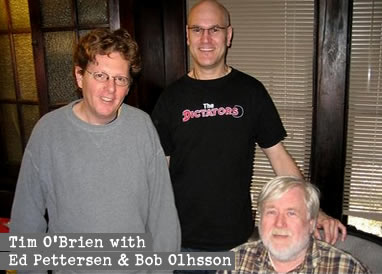
PM: Because one of the things that makes the record as a record so interesting, obviously, is the outrageous diversity of the roster of artists that donated their time.
DM: Yeah. continue
print
(pdf) listen to clips
puremusic home